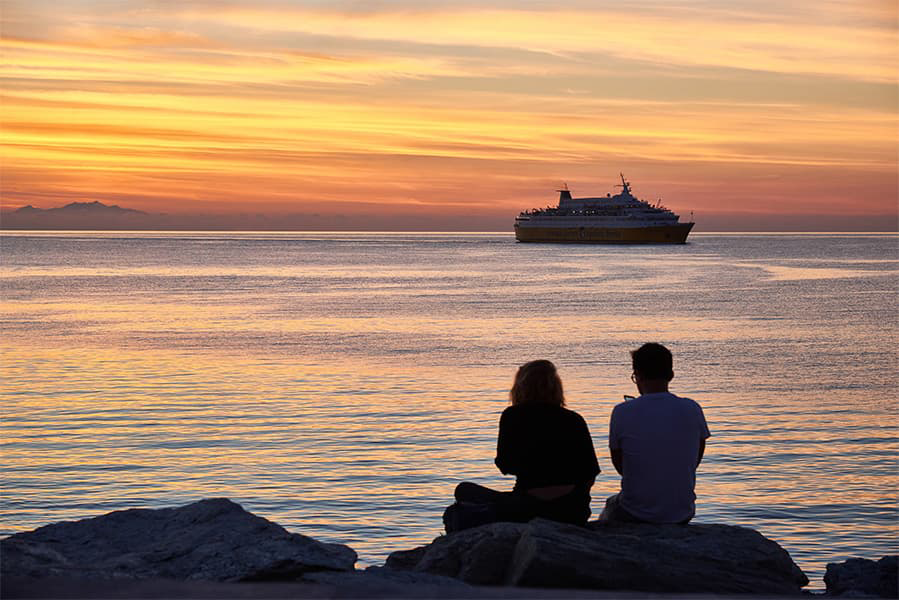Milos – Chania
Ferries to Crete
Milos – Chania
Ferries to Crete

There are around 5 weekly sailings from Milos to Chania. The Milos Chania ferry is operated by
Ferries from Milos to Chania typically depart from Milos at around 17:45. The average sailing time of a Chania Milos ferry is approximately 3h 0m.
Ferry prices for Milos Chania ferries typically range between €78* and €311*. The average price is around €184*. The cheapest ferry prices from Milos to Chania start from €78*. The average price for a foot passenger is €167*. The average price for a car ferry is €415*.
Pricing will vary by season and depend on the number of passengers, vehicle type and sailing time.
The distance between Milos to Chania is approximately 81.4 miles (131.0km), or 70.7 nautical miles.
Yes, SeaJets offer a car ferry from Milos to Chania. Use our Deal Finder to get live pricing for car ferries between Milos and Chania.
Yes, foot passengers can travel on ferries from Milos to Chania with SeaJets.
More routes than anyone else.

Compare fares, times & routes in one place.
Change plans easily with flexi tickets.

Book e-tickets & manage trips in-app.
Live ship tracking & real-time updates.

Top-rated customer support when you need it.
| Milos - Chania Route summary | ||
|---|---|---|
| Departure Country | Greece | |
| Destination Country | Greece | |
| No. of Operators | 1 | |
| Operators | SeaJets | |
| Average Price | 184 €* | |
| Average Weekly Sailings | 5 | |
| Average Sailing Duration | 3h 0m | |
| First Ferry | 17:45 | |
| Distance | 70 nautical miles | |
* Prices subject to change, pricing is taken from last 30 days, last updated 2024-09-04.
Located in the Aegean Sea, to the north of the Sea of Crete, and forming part of the Cyclades group of islands, the island of Milos is perhaps most famous for the statue of Aphrodite (the "Venus de Milo" which is now on display at the Louvre Gallery in Paris). The island is also known for the statues of the Greek god Asclepius, now on display at the British Museum in London, and the Poseidon and an archaic Apollo in Athens. Clustered around the little port of Adamas are a number of little shops that sell souvenirs and trinkets, handmade gifts and jewellery along with locally produced weaving, embroidery and food products.
The island is connected by ferry to the port of Piraeus in Athens, to all of the other Cycladic islands, the Dodecanese islands and Crete with both conventional ferry and high speed catamarans. During the summer months there are daily scheduled services to and from the island. The island's other port is in Apollonia which also connects the island to the islands of Kimolos and Glaranissia.
Chania, the second largest city on the Greek island of Crete is a city that has hosted many different civilisations during its history. The city is built on the area of Minoan Kidonia, at the end of the Homonym Gulf between the Akrotiri and Onicha peninsulas, and was the former capital city of Crete between 1847 and 1972. Today it is the second largest city on Crete after Heraklion and is the capital of the Homonym prefecture. The Old Town's maze of alleys and streets are lined with beautiful Venetian mansions, churches, fountains and historical monuments which are all popular with visitors.
The Venetian port lies at the heart of the old town and is where visitors can still see Venetian buildings sit alongside Turkish buildings that were built later. On the east of Palea Poli is Splantzia district which is built on the site of the former Turkish district and is where you will find Aghii Anargiri Church, which is the only Orthodox church which had received permission to operate during the Venetian and Turkish occupations of the island. Also in the area is Sintrivani Square. The Neoria district of the city is where the former port was located and is also where Venetian shipyards were located in the 14th and 16th centuries.
From the port, ferry services connect Chania to the port of Piraeus, the Cycladic Islands and to the Dodecanese Islands.